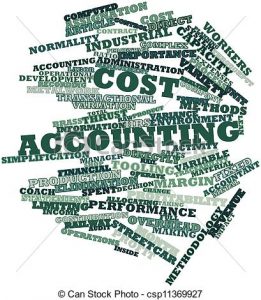
Lets Understand the History of Cost accounting
During World War I and II the social importance of cost accounting grew with the growth of
each country’s defence expenditure. In the absence of competitive markets for most of the
material required to fight war, the Governments in several countries placed cost-plus contracts
under which the price to be paid was the cost of production plus an agreed rate of profit. The
reliance on cost information by the parties to defence contracts continued after World War II
as well.
Important terms used & their Meaning.
Cost
The amount of expenditure (actual or notional) incurred on
or attributable to a specified article, product or activity.
As a verb- To ascertain the cost of a specified thing or activity.
Costing
Costing is defined as “the technique and process of ascertaining
costs”.
According to CIMA “An organisation costing system is the foundation of
the internal financial information system for managers. It provides the
information that management needs to plan and control the
organisation’s activities and to make decisions about the future.”
Cost Accounting
Cost Accounting is defined as “the process of accounting for cost
which begins with the recording of income and expenditure or the
bases on which they are calculated and ends with the preparation of
periodical statements and reports for ascertaining and controlling costs.”
Cost Accountancy
Cost Accountancy has been defined as “the application of costing and
cost accounting principles, methods and techniques to the science, art
and practice of cost control and the ascertainment of profitability. It
includes the presentation of information derived there from for the
purpose of managerial decision making.”
Cost Units
It is a unit of product, service or time (or combination of these) in relation to which costs may
be ascertained or expressed.
We may for instance determine the cost per tonne of steel, per tonne kilometre of a transport
service or cost per machine hour.
Cost units are usually the units of physical measurement like number, weight, area, volume,
length, time and value.
Cost Centres
It is defined as a location, person or an item of equipment (or group of these) for which cost
may be ascertained and used for the purpose of Cost Control.
Cost Centres are of two types,
Personal Cost Centre: It consists of a person or group of persons e.g. Mr. X, supervisor,
foreman, accountant, engineer, process staffs, mining staffs, doctors etc.
Impersonal Cost Centre: It consists of a location or an item of equipment (or group of
these) e.g. Ludhiana branch, boiler house, cooling tower, weighing machine, canteen,
and generator set etc.
Leave a Reply